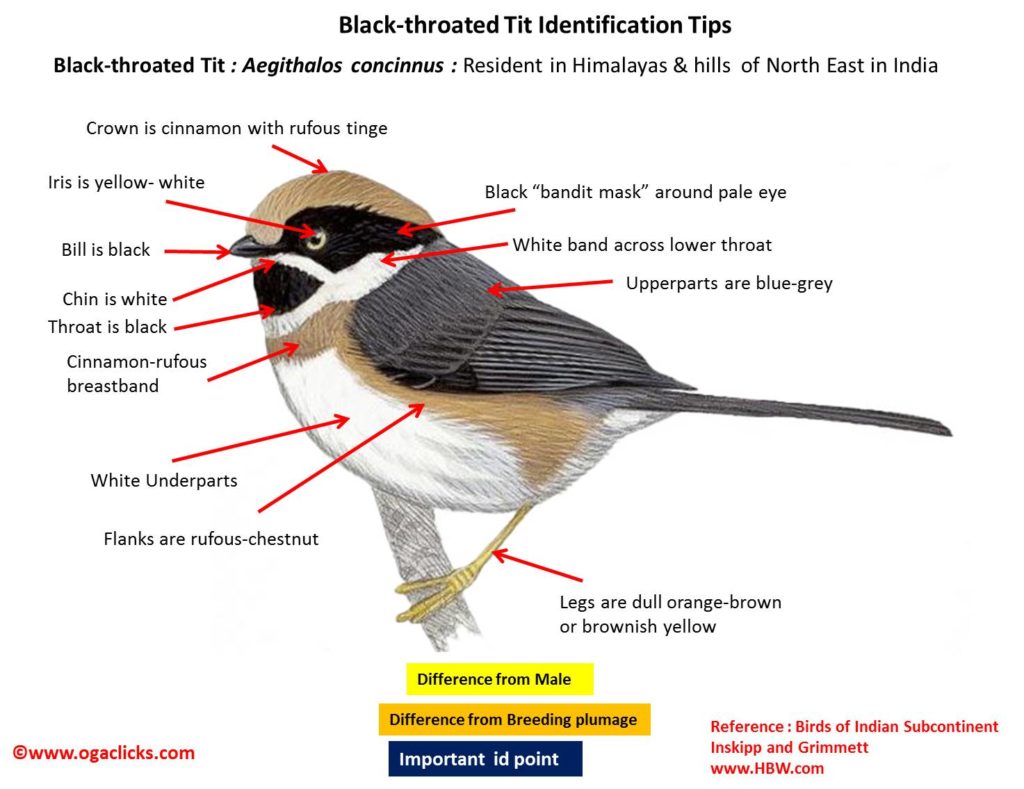Black-throated Tit

Black-throated Tit Aegithalos concinnus
Etymology:
- Aegithalos : Greek word for Tit
- Concinnus : Latin word for elegant, neat, pleasing
Distribution in India: Resident of Himalayas in India
Description: Size of 10·5 cm; wt. of 4–9 g. It is a small passerine with medium-long tail, white chin, black throat and black “bandit mask” around pale eye. The nominate race has cinnamon crown with slight rufous tinge, black lores and black broad band backwards through eye to side of nape. The upperparts are blue-grey;the rump is tinged brownish-ochre. The greater upperwing-coverts and flight-feathers are dark brown, remiges are broadly fringed grey. The tail is blackish-brown with grey edges to feathers, outer three pairs are tipped white, the outermost with white outer web. The chin, submoustachial area and side of neck are white, throat is black. It has a white band across lower throat, below this a well-defined but fairly narrow cinnamon-rufous breastband. The flanks are rufous-chestnut;the remainder of underpartsare white. The iris is yellow-white; bill is black; legs are dull orange-brown or brownish-yellow. The sexes are alike.
Habitat: It is found primarily at edge habitats in broadleaf forest and mixed forest .It is found in wide variety of lightly wooded or bushy habitats, including rhododendron and bamboo. It is found from 1000-3000 m during breeding and except in hardest weather does not usually descend below breeding zone.
Food habits: It eats insects and also small seeds and fruits. It forages mainly in middle and lower storey. It is very gregarious, and usually in flocks, small flocks found throughout breeding season. Often joins mixed-species foraging parties.
Breeding habits: They breed in Mar–June in Himalayas, NE India and Myanmar, Apr in NW Thailand, and late Feb–May in China. It is sometimes a co-operative breeder, with helper. The nest is built by both the sexes, female taking dominant role, work over a protracted period. The nest is made from green moss, lichen, rootlets, bark scraps, hair, spider egg cases and vegetable down, bound together with spider webs, densely lined with feathers and sometimes also wool, fur or vegetable down; usually sited up to 3 m above ground in fork or woven around several twigs in low tree or bush, with entrance at side on the top. They lay a clutch of 3–8 eggs. The incubation is done by female or by both sexes , the male roosts in nest. The incubation period is 14–16 days. The chicks are fed by both sexes, duration of nestling period is 14 days; young remain dependent on parents for at least ten days after fledging.